此系列属于胡寿松《自动控制原理题海与考研指导》(第三版)习题精选,仅包含部分经典习题,需要完整版习题答案请自行查找,本系列属于知识点巩固部分,搭配如下几个系列进行学习,可用于期末考试和考研复习。
自动控制原理(第七版)知识提炼
自动控制原理(第七版)课后习题精选
自动控制原理(第七版)附录MATLAB基础
第九章:线性系统的状态空间分析与综合
Example 9.1
设电网络如下图所示,其中 u u u为系统的输入,列写系统的状态方程式。
- 图 ( a ) ({\rm a}) (a)中, u u u为电流源,状态变量取: x 1 = i L , x 2 = v c x_1=i_L,x_2=v_c x1=iL,x2=vc;
- 图 ( b ) ({\rm b}) (b)中, u u u为电压源,状态变量取: x 1 = v c , x 2 = i 1 , x 3 = i 2 x_1=v_c,x_2=i_1,x_3=i_2 x1=vc,x2=i1,x3=i2;

解:
【图 ( a ) ({\rm a}) (a)】
取状态变量为
x
1
=
i
L
,
x
2
=
v
C
x_1=i_L,x_2=v_C
x1=iL,x2=vC,根据电路定律可列写方程:
{
u
=
i
L
+
C
d
v
C
d
t
R
1
i
L
+
L
d
i
L
d
t
=
v
C
+
R
2
C
d
v
C
d
t
\begin{cases} &u=i_L+C\displaystyle\frac{{\rm d}v_C}{{\rm d}t}\\\\ &R_1i_L+L\displaystyle\frac{{\rm d}i_L}{{\rm d}t}=v_C+R_2C\displaystyle\frac{{\rm d}v_C}{{\rm d}t} \end{cases}
⎩⎪⎪⎪⎨⎪⎪⎪⎧u=iL+CdtdvCR1iL+LdtdiL=vC+R2CdtdvC
整理可得:
{
d
i
L
d
t
=
−
R
1
+
R
2
L
i
L
+
1
L
v
C
+
R
2
L
u
d
v
C
d
t
=
−
1
C
i
L
+
1
C
u
\begin{cases} &\displaystyle\frac{{\rm d}i_L}{{\rm d}t}=-\displaystyle\frac{R_1+R_2}{L}i_L+\displaystyle\frac{1}{L}v_C+\displaystyle\frac{R_2}{L}u\\\\ &\displaystyle\frac{{\rm d}v_C}{{\rm d}t}=-\displaystyle\frac{1}{C}i_L+\displaystyle\frac{1}{C}u \end{cases}
⎩⎪⎪⎪⎨⎪⎪⎪⎧dtdiL=−LR1+R2iL+L1vC+LR2udtdvC=−C1iL+C1u
即
{
x
˙
1
=
−
R
1
+
R
2
L
x
1
+
1
L
x
2
+
R
2
L
u
x
˙
2
=
−
1
C
x
1
+
1
C
u
\begin{cases} &\dot{x}_1=-\displaystyle\frac{R_1+R_2}{L}x_1+\displaystyle\frac{1}{L}x_2+\displaystyle\frac{R_2}{L}u\\\\ &\dot{x}_2=-\displaystyle\frac{1}{C}x_1+\displaystyle\frac{1}{C}u \end{cases}
⎩⎪⎪⎪⎨⎪⎪⎪⎧x˙1=−LR1+R2x1+L1x2+LR2ux˙2=−C1x1+C1u
写成向量-矩阵形式可得系统的状态方程:
x
˙
=
[
−
R
1
+
R
2
L
1
L
−
1
C
0
]
x
+
[
R
2
L
1
C
]
u
\dot{x}=\begin{bmatrix} -\displaystyle\frac{R_1+R_2}{L} & \displaystyle\frac{1}{L}\\\\ -\displaystyle\frac{1}{C} & 0 \end{bmatrix}x+\begin{bmatrix} \displaystyle\frac{R_2}{L}\\\\ \displaystyle\frac{1}{C} \end{bmatrix}u
x˙=⎣⎢⎢⎡−LR1+R2−C1L10⎦⎥⎥⎤x+⎣⎢⎢⎡LR2C1⎦⎥⎥⎤u
【图
(
b
)
({\rm b})
(b)】
选取状态变量为:
x
1
=
v
C
,
x
2
=
i
1
,
x
3
=
i
2
x_1=v_C,x_2=i_1,x_3=i_2
x1=vC,x2=i1,x3=i2,根据电路定律可列写如下方程:
{
C
d
v
C
d
+
i
1
+
i
2
=
0
L
2
d
i
2
d
t
+
R
2
i
2
=
v
C
L
1
d
i
1
d
t
+
R
1
i
1
+
u
=
v
c
\begin{cases} &C\displaystyle\frac{{\rm d}v_C}{{\rm d}}+i_1+i_2=0\\\\ &L_2\displaystyle\frac{{\rm d}i_2}{{\rm d}t}+R_2i_2=v_C\\\\ &L_1\displaystyle\frac{{\rm d}i_1}{{\rm d}t}+R_1i_1+u=v_c \end{cases}
⎩⎪⎪⎪⎪⎪⎪⎪⎪⎪⎨⎪⎪⎪⎪⎪⎪⎪⎪⎪⎧CddvC+i1+i2=0L2dtdi2+R2i2=vCL1dtdi1+R1i1+u=vc
整理可得:
{
d
v
C
d
t
=
−
1
C
i
1
−
1
C
i
2
d
i
1
d
t
=
1
L
1
v
C
−
R
1
L
1
i
1
−
1
L
1
u
d
i
2
d
t
=
1
L
2
v
C
−
R
2
L
2
i
2
\begin{cases} &\displaystyle\frac{{\rm d}v_C}{{\rm d}t}=-\displaystyle\frac{1}{C}i_1-\displaystyle\frac{1}{C}i_2\\\\ &\displaystyle\frac{{\rm d}i_1}{{\rm d}t}=\displaystyle\frac{1}{L_1}v_C-\displaystyle\frac{R_1}{L_1}i_1-\displaystyle\frac{1}{L_1}u\\\\ &\displaystyle\frac{{\rm d}i_2}{{\rm d}t}=\displaystyle\frac{1}{L_2}v_C-\displaystyle\frac{R_2}{L_2}i_2 \end{cases}
⎩⎪⎪⎪⎪⎪⎪⎪⎪⎪⎨⎪⎪⎪⎪⎪⎪⎪⎪⎪⎧dtdvC=−C1i1−C1i2dtdi1=L11vC−L1R1i1−L11udtdi2=L21vC−L2R2i2
即
{
x
˙
1
=
−
1
C
x
2
−
1
C
x
3
x
˙
2
=
1
L
1
x
1
−
R
1
L
1
x
2
−
1
L
1
u
x
˙
3
=
1
L
2
x
1
−
R
2
L
2
x
3
\begin{cases} &\dot{x}_1=-\displaystyle\frac{1}{C}x_2-\displaystyle\frac{1}{C}x_3\\\\ &\dot{x}_2=\displaystyle\frac{1}{L_1}x_1-\displaystyle\frac{R_1}{L_1}x_2-\displaystyle\frac{1}{L_1}u\\\\ &\dot{x}_3=\displaystyle\frac{1}{L_2}x_1-\displaystyle\frac{R_2}{L_2}x_3 \end{cases}
⎩⎪⎪⎪⎪⎪⎪⎪⎪⎪⎨⎪⎪⎪⎪⎪⎪⎪⎪⎪⎧x˙1=−C1x2−C1x3x˙2=L11x1−L1R1x2−L11ux˙3=L21x1−L2R2x3
写成向量-矩阵形式可得系统的状态方程:
x
˙
=
[
0
−
1
C
−
1
C
1
L
1
−
R
1
L
1
0
1
L
2
0
−
R
2
L
2
]
x
+
[
0
−
1
L
1
0
]
u
\dot{x}=\begin{bmatrix} 0 & -\displaystyle\frac{1}{C} & -\displaystyle\frac{1}{C}\\ \displaystyle\frac{1}{L_1} & -\displaystyle\frac{R_1}{L_1} & 0\\ \displaystyle\frac{1}{L_2} & 0 & -\displaystyle\frac{R_2}{L_2} \end{bmatrix}x+\begin{bmatrix} 0\\ -\displaystyle\frac{1}{L_1}\\ 0 \end{bmatrix}u
x˙=⎣⎢⎢⎢⎢⎡0L11L21−C1−L1R10−C10−L2R2⎦⎥⎥⎥⎥⎤x+⎣⎢⎡0−L110⎦⎥⎤u
Example 9.2
设机械运动系统如下图所示,作用在质量块上的拉力 u ( t ) u(t) u(t)为系统的输入,质量块的位移 y ( t ) y(t) y(t)为系统的输出。列写系统的动态方程式(运动自与重力相平衡的位置开始)。

解:
【图 ( a ) ({\rm a}) (a)】
取质量块进行受力分析,列写系统力平衡方程可得:
−
M
y
¨
=
u
+
K
2
y
+
K
1
y
+
B
y
˙
-M\ddot{y}=u+K_2y+K_1y+B\dot{y}
−My¨=u+K2y+K1y+By˙
取
x
1
=
y
,
x
2
=
y
˙
x_1=y,x_2=\dot{y}
x1=y,x2=y˙为状态变量,可得:
{
x
˙
1
=
x
2
x
˙
2
=
−
K
1
+
K
2
M
x
1
−
B
M
x
2
−
1
M
y
=
x
1
\begin{cases} &\dot{x}_1=x_2\\\\ &\dot{x}_2=-\displaystyle\frac{K_1+K_2}{M}x_1-\displaystyle\frac{B}{M}x_2-\displaystyle\frac{1}{M}\\\\ &y=x_1 \end{cases}
⎩⎪⎪⎪⎪⎪⎪⎪⎨⎪⎪⎪⎪⎪⎪⎪⎧x˙1=x2x˙2=−MK1+K2x1−MBx2−M1y=x1
写成向量-矩阵形式为:
x
˙
=
[
0
1
−
K
1
+
K
2
M
−
B
M
]
x
+
[
0
−
1
M
]
u
y
=
[
1
0
]
x
\begin{aligned} &\dot{x}=\begin{bmatrix} 0&1\\\\ -\displaystyle\frac{K_1+K_2}{M} &-\displaystyle\frac{B}{M} \end{bmatrix}x+\begin{bmatrix} 0\\ -\displaystyle\frac{1}{M} \end{bmatrix}u\\\\ &y=\begin{bmatrix} 1&0 \end{bmatrix}x \end{aligned}
x˙=⎣⎢⎡0−MK1+K21−MB⎦⎥⎤x+[0−M1]uy=[10]x
【图
(
b
)
({\rm b})
(b)】
分别取质量块
M
1
M_1
M1和
M
2
M_2
M2进行受力分析,列写系统力平衡方程可得:
{
M
1
y
¨
1
=
−
K
1
y
1
−
B
1
(
y
˙
1
−
y
˙
2
)
−
B
3
y
˙
1
+
u
M
2
y
¨
2
=
−
K
2
y
2
+
B
3
(
y
˙
1
−
y
˙
2
)
−
B
2
y
˙
2
\begin{cases} &M_1\ddot{y}_1=-K_1y_1-B_1(\dot{y}_1-\dot{y}_2)-B_3\dot{y}_1+u\\\\ &M_2\ddot{y}_2=-K_2y_2+B_3(\dot{y}_1-\dot{y}_2)-B_2\dot{y}_2 \end{cases}
⎩⎪⎨⎪⎧M1y¨1=−K1y1−B1(y˙1−y˙2)−B3y˙1+uM2y¨2=−K2y2+B3(y˙1−y˙2)−B2y˙2
取
x
1
=
y
1
,
x
2
=
y
2
,
x
3
=
y
˙
1
,
x
4
=
y
˙
2
x_1=y_1,x_2=y_2,x_3=\dot{y}_1,x_4=\dot{y}_2
x1=y1,x2=y2,x3=y˙1,x4=y˙2为状态变量,可得:
{
x
˙
1
=
x
3
x
˙
2
=
x
4
x
˙
3
=
−
K
1
M
1
x
1
−
B
1
+
B
3
M
1
x
3
+
B
1
M
1
x
4
+
1
M
1
u
x
˙
4
=
−
K
2
M
2
x
2
+
B
3
M
2
x
3
−
B
2
+
B
3
M
2
x
4
y
=
x
1
+
x
2
\begin{cases} &\dot{x}_1=x_3\\\\ &\dot{x}_2=x_4\\\\ &\dot{x}_3=-\displaystyle\frac{K_1}{M_1}x_1-\displaystyle\frac{B_1+B_3}{M_1}x_3+\displaystyle\frac{B_1}{M_1}x_4+\displaystyle\frac{1}{M_1}u\\\\ &\dot{x}_4=-\displaystyle\frac{K_2}{M_2}x_2+\displaystyle\frac{B_3}{M_2}x_3-\displaystyle\frac{B_2+B_3}{M_2}x_4\\\\ &y=x_1+x_2 \end{cases}
⎩⎪⎪⎪⎪⎪⎪⎪⎪⎪⎪⎪⎪⎪⎪⎪⎪⎪⎪⎨⎪⎪⎪⎪⎪⎪⎪⎪⎪⎪⎪⎪⎪⎪⎪⎪⎪⎪⎧x˙1=x3x˙2=x4x˙3=−M1K1x1−M1B1+B3x3+M1B1x4+M11ux˙4=−M2K2x2+M2B3x3−M2B2+B3x4y=x1+x2
写成向量-矩阵形式为:
x
˙
=
[
0
0
1
0
0
0
0
1
−
K
1
M
1
0
−
B
1
+
B
3
M
1
B
1
M
1
0
−
K
2
M
2
B
3
M
2
−
B
2
+
B
3
M
2
]
x
+
[
0
0
1
M
1
0
]
u
y
=
[
1
1
0
0
]
x
\begin{aligned} &\dot{x}=\begin{bmatrix} 0 & 0 & 1 & 0\\\\ 0 & 0 & 0 & 1\\\\ -\displaystyle\frac{K_1}{M_1} & 0 & -\displaystyle\frac{B_1+B_3}{M_1} & \displaystyle\frac{B_1}{M_1}\\\\ 0 & -\displaystyle\frac{K_2}{M_2} & \displaystyle\frac{B_3}{M_2} & -\displaystyle\frac{B_2+B_3}{M_2} \end{bmatrix}x+\begin{bmatrix} 0\\\\ 0\\\\ \displaystyle\frac{1}{M_1}\\\\ 0 \end{bmatrix}u\\\\ &y=\begin{bmatrix} 1 & 1 & 0 & 0 \end{bmatrix}x \end{aligned}
x˙=⎣⎢⎢⎢⎢⎢⎢⎢⎢⎢⎢⎢⎡00−M1K10000−M2K210−M1B1+B3M2B301M1B1−M2B2+B3⎦⎥⎥⎥⎥⎥⎥⎥⎥⎥⎥⎥⎤x+⎣⎢⎢⎢⎢⎢⎢⎢⎢⎢⎡00M110⎦⎥⎥⎥⎥⎥⎥⎥⎥⎥⎤uy=[1100]x
Example 9.3
试求下图所示各系统的动态方程。图中 u u u为输入, y y y为输出, x i ( i = 1 , 2 , 3 , 4 ) x_i(i=1,2,3,4) xi(i=1,2,3,4)为状态。

解:
【图 ( a ) ({\rm a}) (a)】
将频域参量
s
s
s视作为微分算子,设全部初始条件为零,由图可得:
{
(
2
s
+
1
)
X
4
=
2
X
3
(
s
+
1
)
X
1
=
U
−
X
4
s
X
3
=
X
1
+
X
2
(
1
+
0.5
s
)
X
2
=
U
−
X
4
Y
=
X
3
\begin{cases} &(2s+1)X_4=2X_3\\\\ &(s+1)X_1=U-X_4\\\\ &sX_3=X_1+X_2\\\\ &(1+0.5s)X_2=U-X_4\\\\ &Y=X_3 \end{cases}
⎩⎪⎪⎪⎪⎪⎪⎪⎪⎪⎪⎪⎪⎪⎪⎪⎨⎪⎪⎪⎪⎪⎪⎪⎪⎪⎪⎪⎪⎪⎪⎪⎧(2s+1)X4=2X3(s+1)X1=U−X4sX3=X1+X2(1+0.5s)X2=U−X4Y=X3
整理可得动态方程为:
{
x
˙
1
=
−
x
1
−
x
4
+
u
x
˙
2
=
−
2
x
2
−
2
x
4
+
2
u
x
˙
3
=
x
1
+
x
2
x
˙
4
=
x
3
−
0.5
x
4
y
=
x
3
\begin{cases} &\dot{x}_1=-x_1-x_4+u\\\\ &\dot{x}_2=-2x_2-2x_4+2u\\\\ &\dot{x}_3=x_1+x_2\\\\ &\dot{x}_4=x_3-0.5x_4\\\\ &y=x_3 \end{cases}
⎩⎪⎪⎪⎪⎪⎪⎪⎪⎪⎪⎪⎪⎪⎪⎪⎨⎪⎪⎪⎪⎪⎪⎪⎪⎪⎪⎪⎪⎪⎪⎪⎧x˙1=−x1−x4+ux˙2=−2x2−2x4+2ux˙3=x1+x2x˙4=x3−0.5x4y=x3
向量-矩阵形式为:
x
˙
=
[
−
1
0
0
−
1
0
−
2
0
−
2
1
1
0
0
0
0
1
−
0.5
]
x
+
[
1
2
0
0
]
u
y
=
[
0
0
1
0
]
x
\begin{aligned} &\dot{x}=\begin{bmatrix} -1 & 0 & 0 & -1\\ 0 & -2 & 0 & -2\\ 1 & 1 & 0 & 0\\ 0 & 0 & 1 & -0.5 \end{bmatrix}x+\begin{bmatrix} 1\\ 2\\ 0\\ 0 \end{bmatrix}u\\\\ &y=\begin{bmatrix} 0 & 0 & 1 & 0 \end{bmatrix}x \end{aligned}
x˙=⎣⎢⎢⎡−10100−2100001−1−20−0.5⎦⎥⎥⎤x+⎣⎢⎢⎡1200⎦⎥⎥⎤uy=[0010]x
【图
(
b
)
({\rm b})
(b)】
将频域参量
s
s
s视作微分算子,设全部初始条件为零,由图可知:
{
s
X
3
=
X
2
Y
1
=
X
1
+
X
2
Y
2
=
X
3
+
U
1
−
Y
1
(
s
+
2
)
X
2
=
U
2
−
Y
2
(
s
+
1
)
X
1
=
U
1
−
Y
1
\begin{cases} &sX_3=X_2\\\\ &Y_1=X_1+X_2\\\\ &Y_2=X_3+U_1-Y_1\\\\ &(s+2)X_2=U_2-Y_2\\\\ &(s+1)X_1=U_1-Y_1 \end{cases}
⎩⎪⎪⎪⎪⎪⎪⎪⎪⎪⎪⎪⎪⎪⎪⎪⎨⎪⎪⎪⎪⎪⎪⎪⎪⎪⎪⎪⎪⎪⎪⎪⎧sX3=X2Y1=X1+X2Y2=X3+U1−Y1(s+2)X2=U2−Y2(s+1)X1=U1−Y1
整理可得:
{
x
˙
1
=
−
2
x
1
−
x
2
+
u
1
x
˙
2
=
x
1
−
x
2
−
x
3
−
u
1
+
u
2
x
˙
3
=
x
2
y
1
=
x
1
+
x
2
y
2
=
−
x
1
−
x
2
+
x
3
+
u
1
\begin{cases} &\dot{x}_1=-2x_1-x_2+u_1\\\\ &\dot{x}_2=x_1-x_2-x_3-u_1+u_2\\\\ &\dot{x}_3=x_2\\\\ &y_1=x_1+x_2\\\\ &y_2=-x_1-x_2+x_3+u_1 \end{cases}
⎩⎪⎪⎪⎪⎪⎪⎪⎪⎪⎪⎪⎪⎪⎪⎪⎨⎪⎪⎪⎪⎪⎪⎪⎪⎪⎪⎪⎪⎪⎪⎪⎧x˙1=−2x1−x2+u1x˙2=x1−x2−x3−u1+u2x˙3=x2y1=x1+x2y2=−x1−x2+x3+u1
向量-矩阵形式为:
x
˙
=
[
−
2
−
1
0
1
−
1
−
1
0
1
0
]
x
+
[
1
0
−
1
1
0
0
]
u
y
=
[
1
1
0
−
1
−
1
1
]
x
+
[
0
0
1
0
]
u
\begin{aligned} &\dot{x}=\begin{bmatrix} -2 & -1 & 0\\ 1 & -1 & -1\\ 0 & 1 & 0 \end{bmatrix}x+ \begin{bmatrix} 1 & 0\\ -1 & 1\\ 0 & 0 \end{bmatrix}u\\\\ &y=\begin{bmatrix} 1 & 1 & 0\\ -1 & -1 & 1 \end{bmatrix}x+\begin{bmatrix} 0 & 0\\ 1 & 0 \end{bmatrix}u \end{aligned}
x˙=⎣⎡−210−1−110−10⎦⎤x+⎣⎡1−10010⎦⎤uy=[1−11−101]x+[0100]u
Example 9.4
设系统的传递函数为: G ( s ) = Y ( s ) U ( s ) = 2 s + 8 2 s 3 + 12 s 2 + 22 s + 12 G(s)=\displaystyle\frac{Y(s)}{U(s)}=\displaystyle\frac{2s+8}{2s^3+12s^2+22s+12} G(s)=U(s)Y(s)=2s3+12s2+22s+122s+8,求:
- 系统的可控标准型实现;
- 系统的可观测标准型实现;
要求画出各种实现的系统状态变量图。
解:
-
系统的可控标准型实现;
由于
G ( s ) = Y ( s ) U ( s ) = 2 s + 8 2 s 3 + 12 s 2 + 22 s + 12 G(s)=\displaystyle\frac{Y(s)}{U(s)}=\displaystyle\frac{2s+8}{2s^3+12s^2+22s+12} G(s)=U(s)Y(s)=2s3+12s2+22s+122s+8
可控标准型实现:
x ˙ c = A c x c + b c u = [ 0 1 0 0 0 1 − 6 − 11 − 6 ] x c + [ 0 0 1 ] u y = c x c = [ 4 1 0 ] x c \begin{aligned} &\dot{x}_c=A_cx_c+b_cu=\begin{bmatrix} 0 & 1 & 0\\ 0 & 0 & 1\\ -6 & -11 & -6 \end{bmatrix}x_c+\begin{bmatrix} 0\\ 0\\ 1 \end{bmatrix}u\\\\ &y=cx_c=\begin{bmatrix} 4 & 1 & 0 \end{bmatrix}x_c \end{aligned} x˙c=Acxc+bcu=⎣⎡00−610−1101−6⎦⎤xc+⎣⎡001⎦⎤uy=cxc=[410]xc
可控标准型实现的系统状态变量图:

-
系统的可观测标准型实现;
系统的可观测标准型实现为可控标准型实现的对偶形式,即
A o = A c T , b o = c c T , c o = b c T A_o=A_c^T,b_o=c_c^T,c_o=b_c^T Ao=AcT,bo=ccT,co=bcT
则可观测标准型实现为:
x ˙ o = A o x o + b o u = [ 0 0 − 6 1 0 − 11 0 1 − 6 ] x o + [ 4 1 0 ] u y = c x o = [ 0 0 1 ] x o \begin{aligned} &\dot{x}_o=A_ox_o+b_ou=\begin{bmatrix} 0 & 0 & -6\\ 1 & 0 & -11\\ 0 & 1 & -6 \end{bmatrix}x_o+\begin{bmatrix} 4\\1\\0 \end{bmatrix}u\\\\ &y=cx_o=\begin{bmatrix} 0 & 0 & 1 \end{bmatrix}x_o \end{aligned} x˙o=Aoxo+bou=⎣⎡010001−6−11−6⎦⎤xo+⎣⎡410⎦⎤uy=cxo=[001]xo
可观测标准型实现的系统状态变量图:



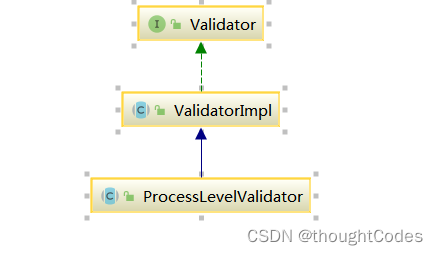
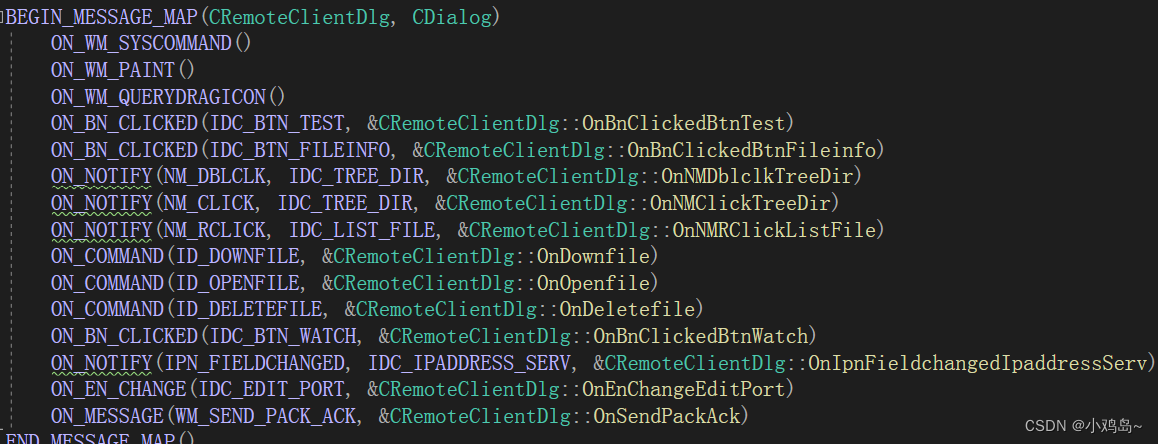
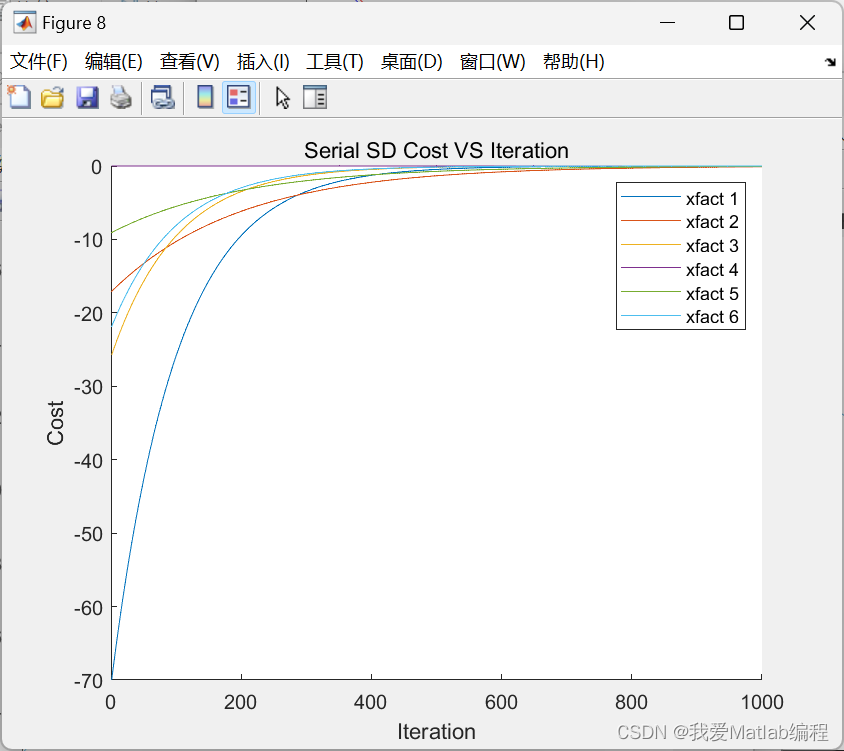
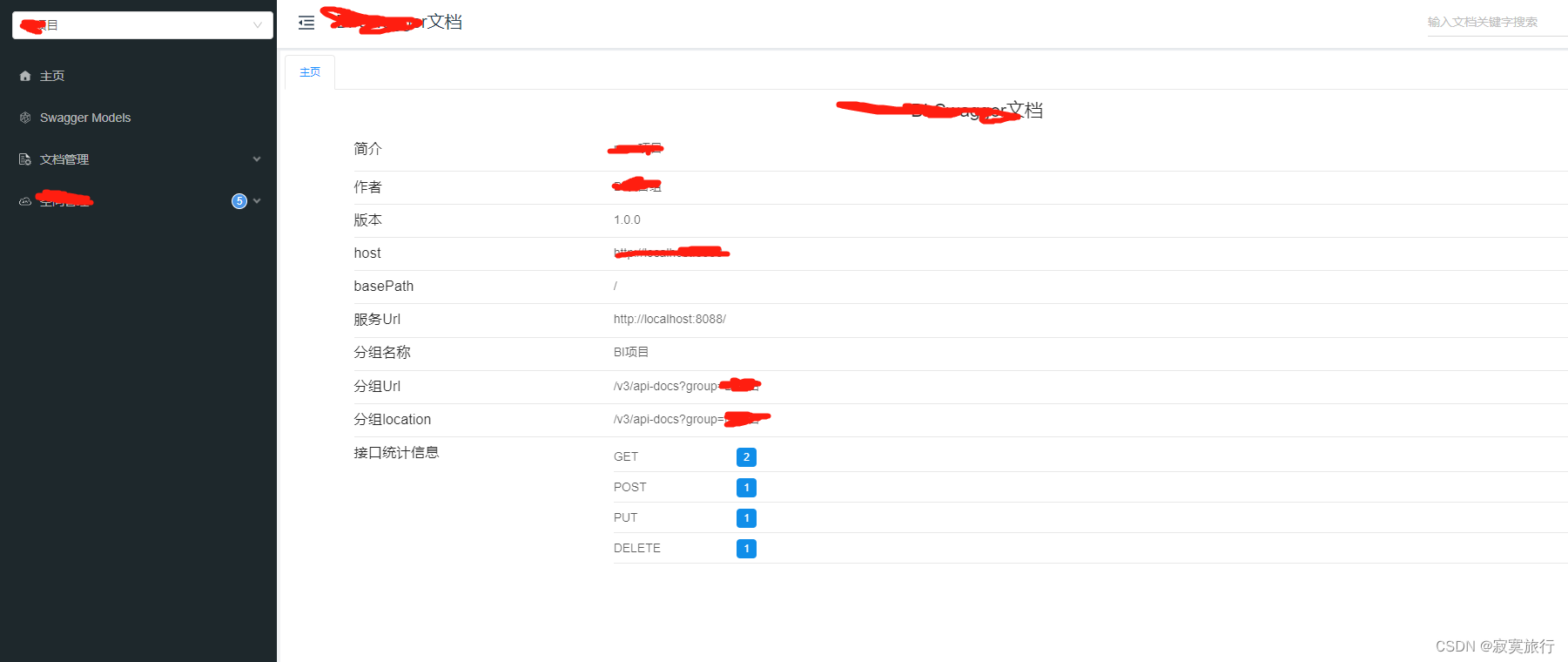



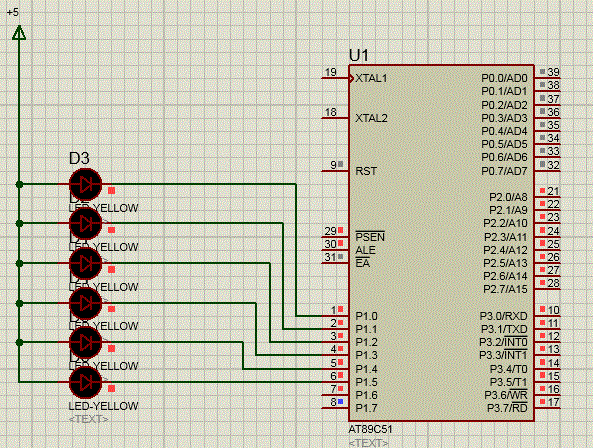
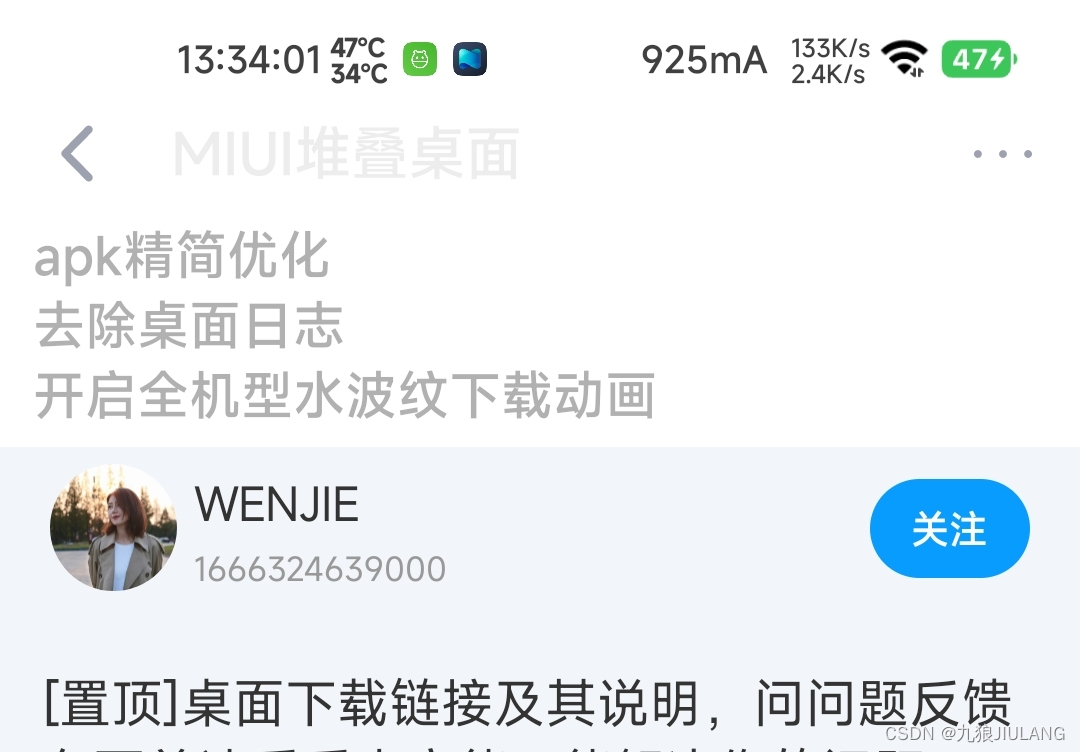
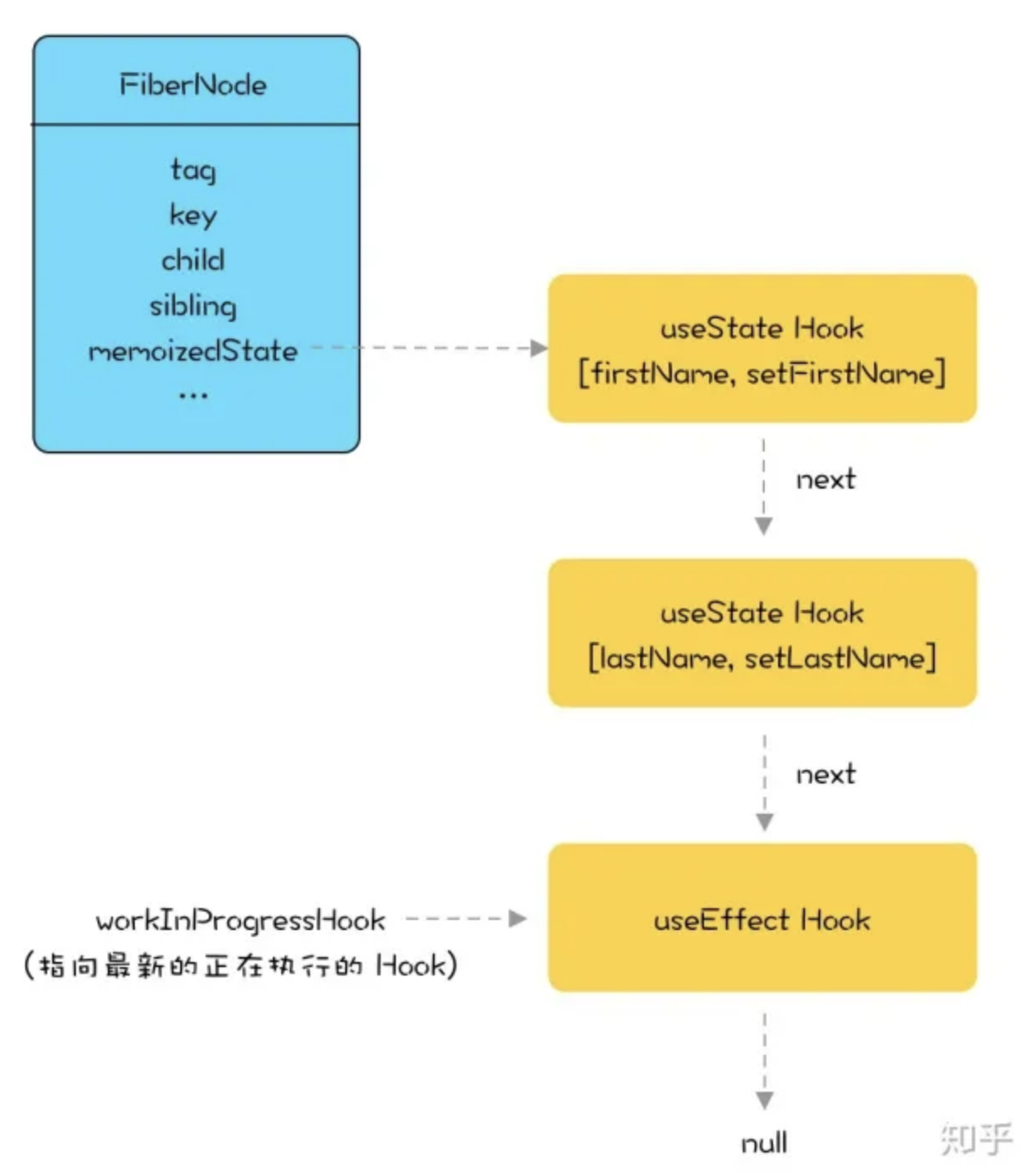
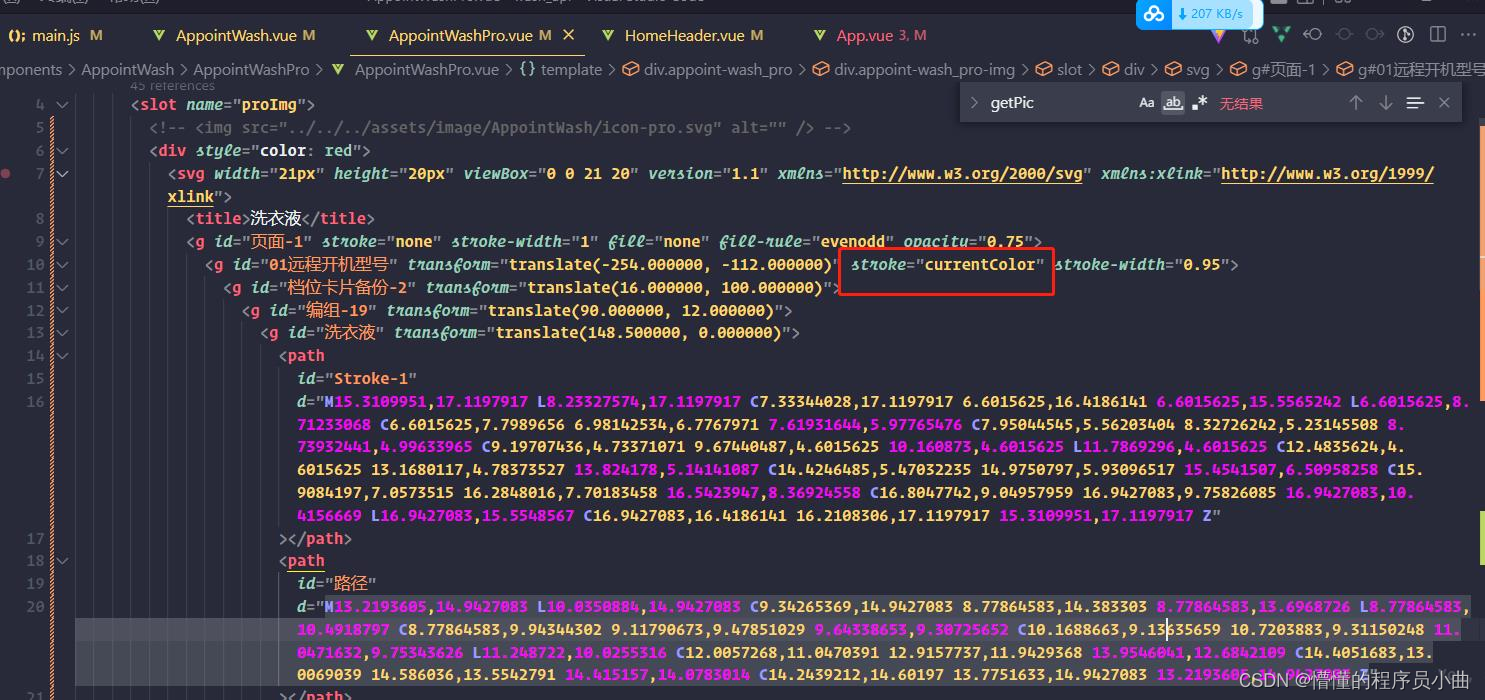
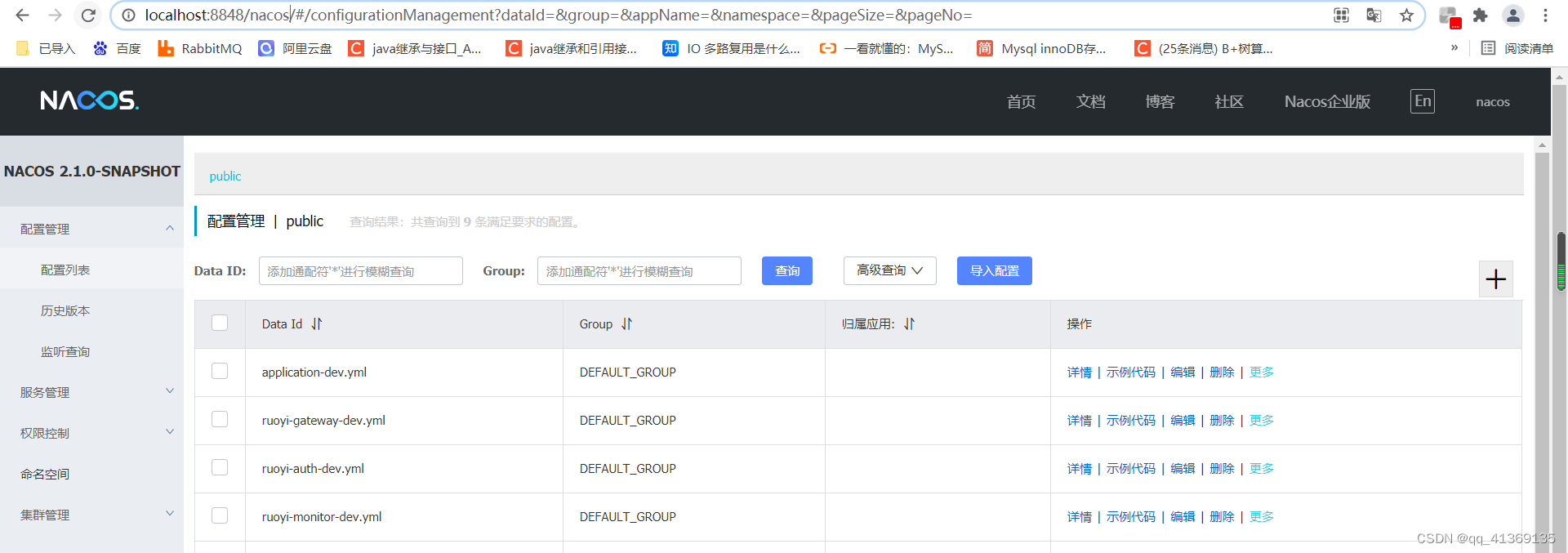

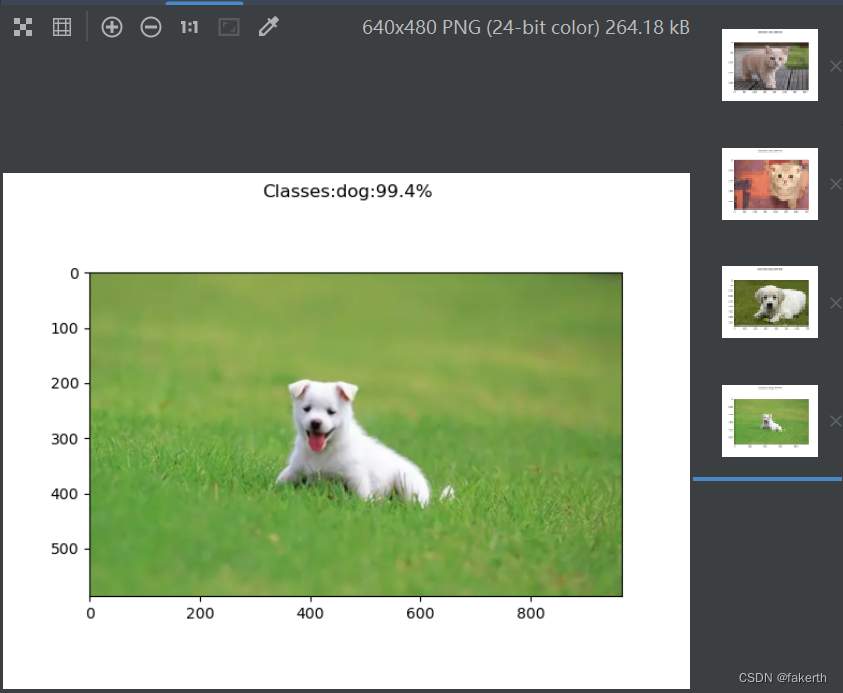

![[附源码]java毕业设计基于实时定位的超市配送业务管理](https://img-blog.csdnimg.cn/47b948e8be7c45b891444ab4803a20a6.png)
